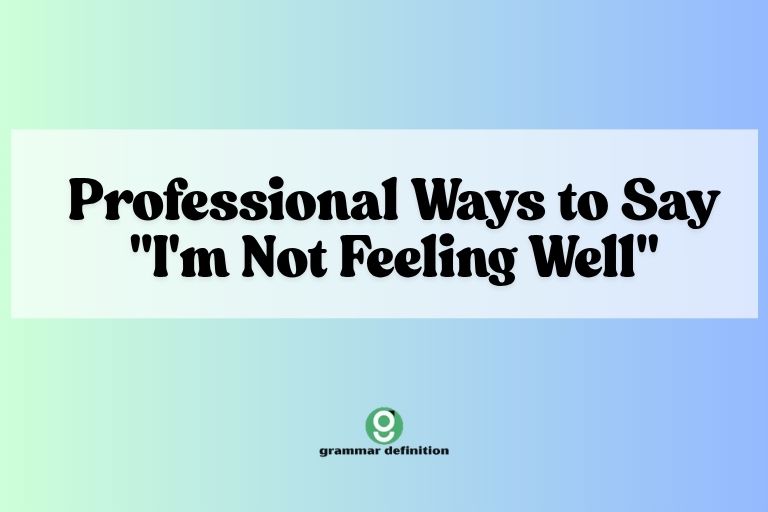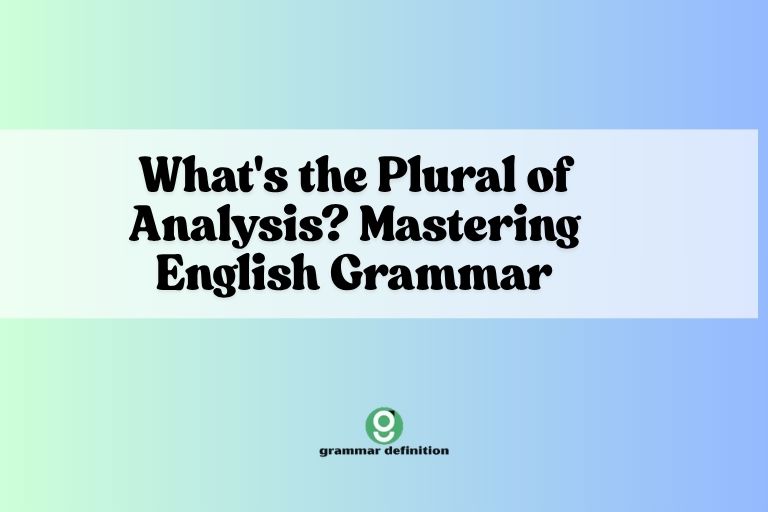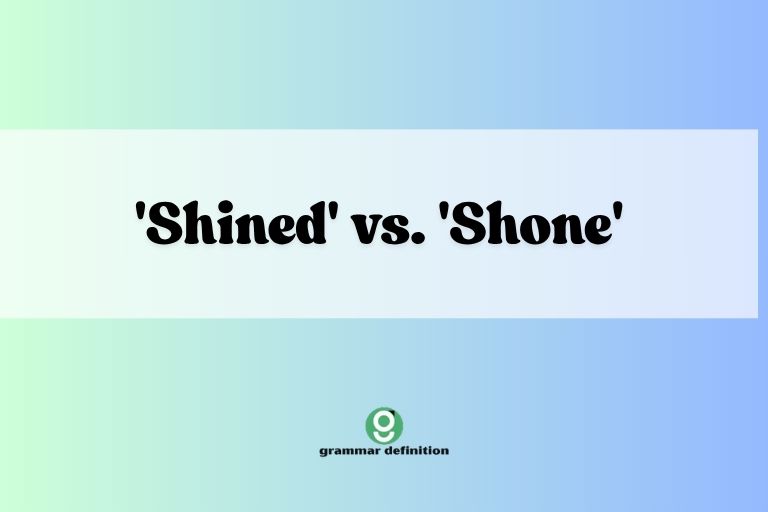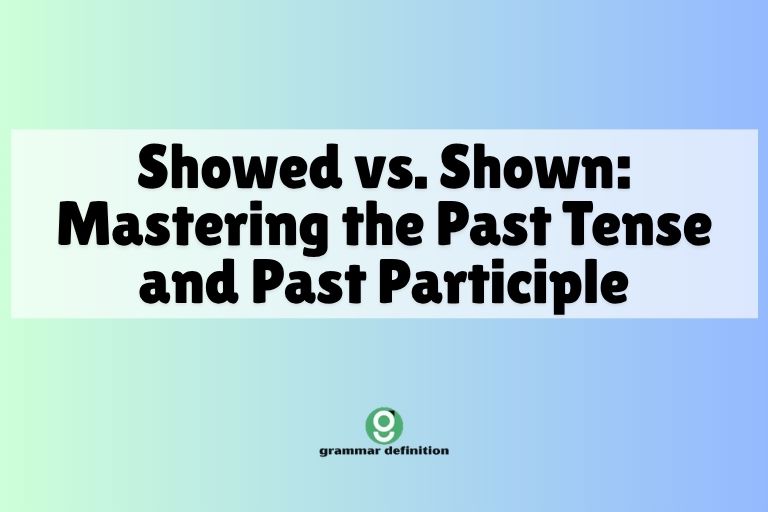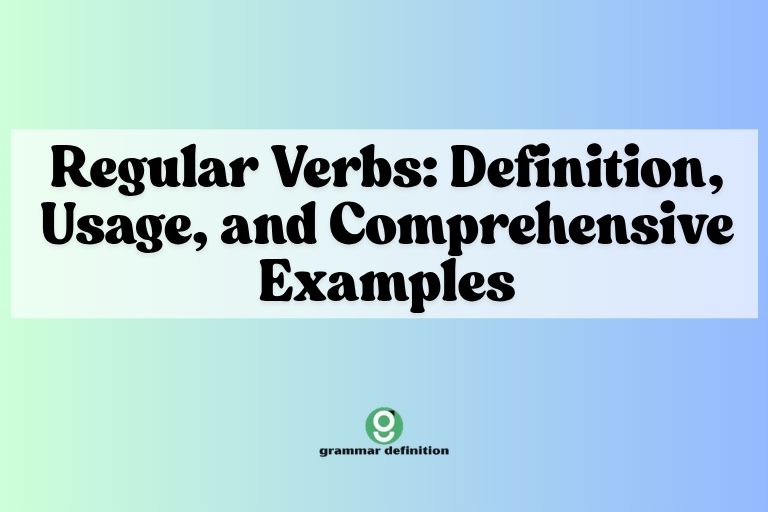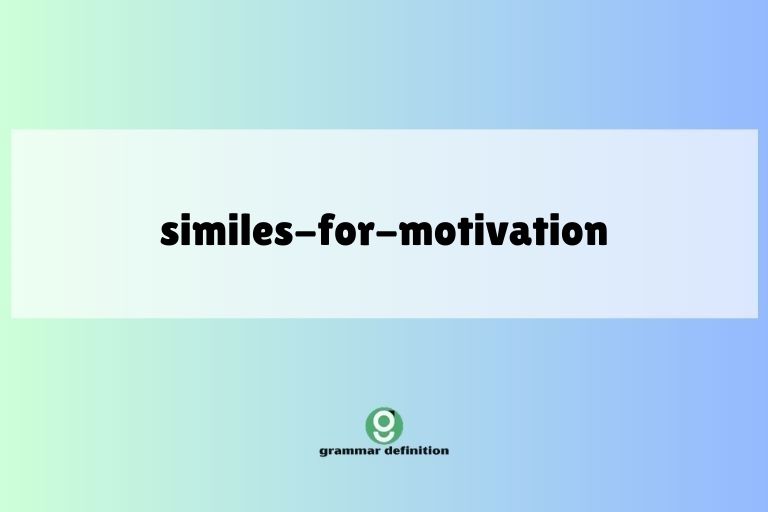Metre vs. Meter: Spelling, Usage, and Examples
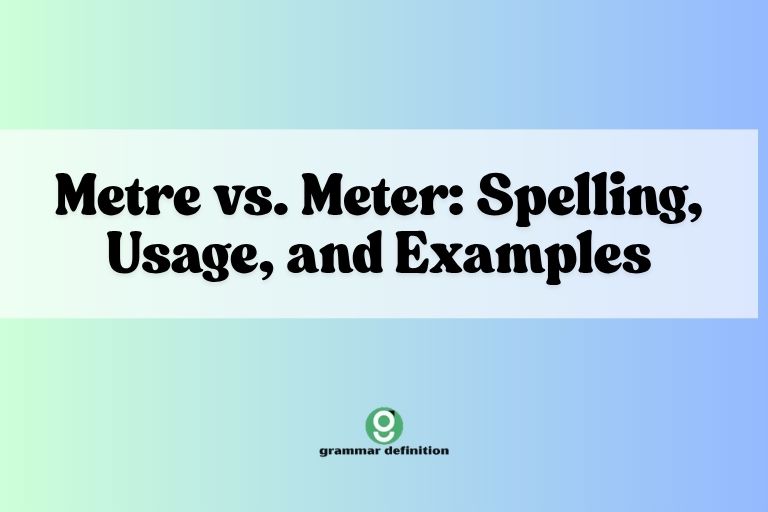
Understanding the nuances of English spelling can be challenging, especially when dealing with words that have different spellings based on regional variations. The word “metre/meter,” referring to a unit of length, is a prime example.
This article delves into the differences between “metre” and “meter,” exploring their usage in British and American English, providing numerous examples, and offering practical exercises to solidify your understanding. Whether you’re a student, writer, or simply someone keen to improve their English proficiency, this guide will help you confidently navigate the correct usage of these words.
Table of Contents
- Introduction
- Definition of Metre/Meter
- Structural Breakdown
- Types and Categories
- Examples of Metre and Meter
- Usage Rules
- Common Mistakes
- Practice Exercises
- Advanced Topics
- FAQ
- Conclusion
Introduction
Mastering the English language involves understanding not only grammar and vocabulary but also the subtle differences in spelling and usage that vary across different regions. One such variation is the spelling of units of measurement, particularly the word “metre,” which is also spelled “meter.” This distinction is primarily geographical, with “metre” being the standard spelling in British English and “meter” being the standard in American English.
This article aims to provide a comprehensive guide to understanding the correct usage of “metre” and “meter.” By exploring the definitions, structural differences, and providing numerous examples, we will equip you with the knowledge to use these words accurately and confidently. Whether you are writing a formal essay, a scientific report, or simply engaging in everyday conversation, knowing when to use “metre” or “meter” is essential for clear and effective communication.
Furthermore, this guide will address common mistakes and provide practical exercises to reinforce your understanding. We will also touch upon advanced topics related to the usage of these words in specific contexts, such as poetry and technical fields.
By the end of this article, you will have a solid grasp of the nuances surrounding “metre” and “meter,” enabling you to use them correctly in any situation.
Definition of Metre/Meter
The word “metre” (British English) or “meter” (American English) has two primary meanings, both related but distinct. Understanding these meanings is crucial for using the word correctly in various contexts.
Unit of Length
The most common definition of “metre/meter” is as a unit of length in the metric system. It is defined as the base unit of length in the International System of Units (SI).
One metre is approximately equal to 3.28 feet or 39.37 inches. This definition is universally accepted, but the spelling varies depending on the region.
Measuring Device
The word “meter” (American English) or “gauge” (British English for specific devices) can also refer to a device used to measure something. Examples include a gas meter, a water meter, and an electricity meter.
These devices measure the quantity of a substance or energy consumed over a period of time. While “meter” is the standard spelling for this meaning in American English, British English often uses “gauge” for specific measuring instruments.
Structural Breakdown
The structural breakdown of “metre/meter” is relatively straightforward. It’s a noun, and its plural form is “metres” (British English) or “meters” (American English).
The word is derived from the French word “mètre,” which in turn comes from the Greek word “metron,” meaning “a measure.”
Etymology
Tracing the etymology of “metre/meter” helps understand its historical context and how its meaning has evolved. The journey from the Greek “metron” to the French “mètre” and finally to the English “metre/meter” reflects the adoption of the metric system as a standard unit of measurement.
Spelling Variations
The key structural difference lies in the spelling: “metre” in British English and “meter” in American English. This difference is consistent across various contexts where the word is used as a unit of length.
However, it’s important to note that “meter” is also used in British English when referring to a measuring device (e.g., parking meter).
Types and Categories
While the core meaning of “metre/meter” remains consistent, there are different categories and contexts in which it is used. These categories primarily relate to the specific application of the unit of length or the type of measuring device.
Units of Measurement
As a unit of measurement, “metre/meter” is part of the metric system and is used to measure distances, lengths, and heights. It is also used as a base for derived units like square metres (area) and cubic metres (volume).
Measuring Devices
When referring to measuring devices, “meter” (American English) or “gauge” (British English) can encompass a wide range of instruments used to measure various quantities. These include:
- Gas meter: Measures the amount of gas consumed.
- Water meter: Measures the amount of water used.
- Electricity meter: Measures the amount of electricity consumed.
- Parking meter: Measures the time a vehicle is parked in a designated space.
Examples of Metre and Meter
To illustrate the usage of “metre” and “meter,” let’s examine several examples categorized by their context. These examples will highlight the differences in spelling and usage between British and American English.
Examples: Unit of Length
The following table provides examples of “metre” (British English) and “meter” (American English) used as a unit of length. Pay attention to the context and the spelling used in each example.
| British English (Metre) | American English (Meter) |
|---|---|
| The room is five metres long. | The room is five meters long. |
| He jumped two metres high. | He jumped two meters high. |
| The fabric costs £10 per metre. | The fabric costs $12 per meter. |
| The swimming pool is 50 metres long. | The swimming pool is 50 meters long. |
| The athlete ran the 100-metre race. | The athlete ran the 100-meter race. |
| The building is 200 metres tall. | The building is 200 meters tall. |
| The garden is 10 metres wide. | The garden is 10 meters wide. |
| The rope is three metres long. | The rope is three meters long. |
| The table is one metre high. | The table is one meter high. |
| The shelf is half a metre deep. | The shelf is half a meter deep. |
| The road is several kilometres (thousands of metres) long. | The road is several kilometers (thousands of meters) long. |
| The climber ascended 500 metres up the mountain. | The climber ascended 500 meters up the mountain. |
| The tailor needed two metres of cloth for the skirt. | The tailor needed two meters of cloth for the skirt. |
| The fence is constructed with posts every three metres. | The fence is constructed with posts every three meters. |
| The river is about 30 metres wide at this point. | The river is about 30 meters wide at this point. |
| The distance between the trees is roughly eight metres. | The distance between the trees is roughly eight meters. |
| The runway is long enough for landing, stretching over a thousand metres. | The runway is long enough for landing, stretching over a thousand meters. |
| The trench was dug five metres below ground level. | The trench was dug five meters below ground level. |
| The sail measures four metres in height. | The sail measures four meters in height. |
| The snake was nearly a metre long. | The snake was nearly a meter long. |
| The parcel was one metre by half a metre. | The parcel was one meter by half a meter. |
| The length of the shadow was approximately six metres. | The length of the shadow was approximately six meters. |
| The depth of the pool is two metres at the deep end. | The depth of the pool is two meters at the deep end. |
| We measured the garden and it’s roughly 15 metres in length. | We measured the garden and it’s roughly 15 meters in length. |
| The room’s ceiling is three metres above the floor. | The room’s ceiling is three meters above the floor. |
| The height of the door is just over two metres. | The height of the door is just over two meters. |
Examples: Measuring Devices
The following table provides examples where “meter” (American English) and “gauge” or “meter” (British English) are used to refer to measuring devices. Note the variations in British English, where “gauge” is often preferred for specific instruments.
| British English (Gauge/Meter) | American English (Meter) |
|---|---|
| Check the gas meter to see how much gas we’ve used. | Check the gas meter to see how much gas we’ve used. |
| The water meter reading is very high this month. | The water meter reading is very high this month. |
| The electricity meter needs to be read. | The electricity meter needs to be read. |
| I put money in the parking meter. | I put money in the parking meter. |
| The fuel gauge shows the tank is nearly full. | The fuel meter shows the tank is nearly full. |
| The pressure gauge indicated a leak. | The pressure meter indicated a leak. |
| A parking meter is installed on the street corner. | A parking meter is installed on the street corner. |
| The technician inspected the electricity meter. | The technician inspected the electricity meter. |
| The water company came to read the water meter. | The water company came to read the water meter. |
| The gas meter is located outside the house. | The gas meter is located outside the house. |
| The speedometer in the car was not working properly. | The speedometer in the car was not working properly. |
| The taximeter showed the fare. | The taximeter showed the fare. |
| The voltage meter was used to test the circuit. | The voltage meter was used to test the circuit. |
| The light meter is used in photography. | The light meter is used in photography. |
| The parking meter accepted only coins. | The parking meter accepted only coins. |
| The old gas meter was replaced with a smart meter. | The old gas meter was replaced with a smart meter. |
| The electricity meter recorded the energy consumption. | The electricity meter recorded the energy consumption. |
| The water meter is read quarterly. | The water meter is read quarterly. |
| The gas meter is checked for leaks regularly. | The gas meter is checked for leaks regularly. |
| The parking meter was out of order. | The parking meter was out of order. |
| The car’s fuel gauge indicated that it was nearly empty. | The car’s fuel meter indicated that it was nearly empty. |
| The pressure gauge showed the tire needed air. | The pressure meter showed the tire needed air. |
| The technician used a multimeter to diagnose the electrical fault. | The technician used a multimeter to diagnose the electrical fault. |
| The anemometer measured the wind speed on the roof. | The anemometer measured the wind speed on the roof. |
| The thermometer measured the temperature inside. | The thermometer measured the temperature inside. |
Examples: In Poetry and Literature
In poetry and literature, “metre” refers to the rhythmic structure of a verse or poem. This usage is consistent across both British and American English, although the spelling “meter” may sometimes be seen in American publications.
| Example | Explanation |
|---|---|
| The poem is written in iambic pentameter. | Iambic pentameter is a specific type of metre in poetry, consisting of five iambic feet per line. |
| The poet experimented with different metrical patterns. | This refers to the various rhythmic structures a poet might use in their work. |
| The metre of the song creates a catchy rhythm. | Here, “metre” refers to the rhythmic structure of a song. |
| The poet carefully chose the metre to match the poem’s theme. | The choice of metre can enhance the emotional impact of a poem. |
| Shakespeare often used blank verse, which is unrhymed iambic pentameter. | Blank verse is a common metrical form in English poetry. |
| The metre of the ballad gave it a sing-song quality. | Ballads often have a simple, repetitive metre. |
| The free verse poem had no set metre. | Free verse poems do not adhere to traditional metrical patterns. |
| The metre helped to emphasize certain words in the verse. | Meter helps add emphasis in poetry. |
| The metre of the sonnet created a pleasing rhythm. | Sonnets are also written in a specific rhyme scheme. |
| The change in metre signaled a shift in the poem’s mood. | The shift in meter can change the direction of the poem. |
| The dactylic hexameter metre is often used in epic poems. | Dactylic hexameter is a complex meter. |
| The poet used a trochaic metre to create a sense of urgency. | Trochaic meter creates urgency. |
| The metre of the poem was subtly altered to create a unique effect. | The unique effects are due to the altered metre. |
| The poem’s metre was so regular that it became monotonous. | Regular meter can sometimes become boring. |
| The use of a specific metre helped to convey the poem’s message. | The meter helps to convey the message. |
| The choice of metre reflected the poet’s personal style. | The choice of meter reflects the poet. |
| The metre of the verse was carefully crafted to match the theme. | The crafted meter matches the theme. |
| The poet sought to create a new metre that had never been used before. | The poet’s aim was to create a new meter. |
| The metre of the lyrics helped to make the song memorable. | The meter helps to make the song memorable. |
| The poet’s use of unconventional metres was considered avant-garde. | Unconventional meter is considered avant-garde. |
| The metre of the play added to its dramatic effect. | The meter adds to the dramatic effect. |
| The metre of the story was so engaging that the reader was hooked. | The engaging meter kept the reader hooked. |
| The metre of the poem was almost hypnotic. | The hypnotic metre was engaging. |
| The metre of the novel was so beautiful that the reader was moved to tears. | The beautiful meter moved the reader. |
| The metre of the script was so well-written that the actors had no problem reciting it. | The well-written meter made it easy for actors. |
Usage Rules
The primary rule governing the usage of “metre” and “meter” is based on regional dialect. In British English, “metre” is the standard spelling for the unit of length, while in American English, “meter” is used.
For measuring devices, “meter” is generally used in American English, and both “meter” and “gauge” are used in British English, with “gauge” often preferred for specific instruments.
British English
In British English, use “metre” for the unit of length and “meter” or “gauge” for measuring devices.
American English
In American English, use “meter” for both the unit of length and measuring devices.
Contextual Considerations
Consider your audience and the context in which you are writing. If you are writing for a British audience, use “metre” for the unit of length.
If you are writing for an American audience, use “meter.” In international contexts, it’s often best to use the spelling preferred by the majority of your audience or to choose one spelling and remain consistent throughout your document.
Common Mistakes
One of the most common mistakes is using the incorrect spelling based on regional preferences. For example, using “meter” for the unit of length in British English or “metre” in American English.
Another mistake is confusing the usage of “meter” and “gauge” in British English when referring to measuring devices.
Correct vs. Incorrect Examples
The table below illustrates some common mistakes and their corrections.
| Incorrect | Correct (British English) | Correct (American English) |
|---|---|---|
| The room is five meters long. | The room is five metres long. | The room is five meters long. |
| Check the gas metre. | Check the gas meter/gauge. | Check the gas meter. |
| The 100-metre race. | The 100-metre race. | The 100-meter race. |
| The water metre reading is high. | The water meter/gauge reading is high. | The water meter reading is high. |
| The fabric costs $12 per metre. | The fabric costs £10 per metre. | The fabric costs $12 per meter. |
| The building is 200 metre tall. | The building is 200 metres tall. | The building is 200 meters tall. |
| The speedometre in the car was not working properly. | The speedometer in the car was not working properly. | The speedometer in the car was not working properly. |
| The voltage metre was used to test the circuit. | The voltage meter was used to test the circuit. | The voltage meter was used to test the circuit. |
Practice Exercises
To reinforce your understanding of “metre” and “meter,” complete the following exercises. Choose the correct spelling based on the context and regional dialect.
Exercise 1: Fill in the Blanks (British English)
Fill in the blanks with the correct spelling: “metre” or “meter.”
| Question | Answer |
|---|---|
| 1. The swimming pool is 25 ______ long. | metre |
| 2. Check the electricity ______. | meter |
| 3. The fabric costs £8 per ______. | metre |
| 4. He jumped one and a half ______ high. | metre |
| 5. The gas ______ needs to be read. | meter |
| 6. The room is four ______ wide. | metre |
| 7. The pressure ______ indicated a problem. | meter/gauge |
| 8. The rope is five ______ long. | metre |
| 9. I put money in the parking ______. | meter |
| 10. The athlete ran the 400-______ race. | metre |
Exercise 2: Fill in the Blanks (American English)
Fill in the blanks with the correct spelling: “meter.”
| Question | Answer |
|---|---|
| 1. The swimming pool is 25 ______ long. | meter |
| 2. Check the electricity ______. | meter |
| 3. The fabric costs $10 per ______. | meter |
| 4. He jumped one and a half ______ high. | meter |
| 5. The gas ______ needs to be read. | meter |
| 6. The room is four ______ wide. | meter |
| 7. The pressure ______ indicated a problem. | meter |
| 8. The rope is five ______ long. | meter |
| 9. I put money in the parking ______. | meter |
| 10. The athlete ran the 400-______ race. | meter |
Exercise 3: Choose the Correct Spelling
Choose the correct spelling based on the context provided.
| Question | Options | Answer |
|---|---|---|
| 1. The distance is measured in (metres/meters). (American English Context) | metres, meters | meters |
| 2. The poem is written in iambic penta(metre/meter). | metre, meter | metre |
| 3. The water (metre/meter) reading is very high. (British English Context) | metre, meter | meter |
| 4. The building is 100 (metres/meters) tall. (British English Context) | metres, meters | metres |
| 5. The electricity (metre/meter) needs to be checked. (American English Context) | metre, meter | meter |
| 6. The garden is 5 (metres/meters) wide. (British English Context) | metres, meters | metres |
| 7. The fuel (metre/meter) shows the tank is full. (American English Context) | metre, meter | meter |
| 8. The athlete ran the 200-(metre/meter) race. (American English Context) | metre, meter | meter |
| 9. I put money in the parking (metre/meter). (American English Context) | metre, meter | meter |
| 10. The athlete ran the 200-(metre/meter) race. (British English Context) | metre, meter | metre |
Advanced Topics
Beyond the basic understanding of spelling variations, there are advanced topics related to the usage of “metre/meter” that can further enhance your knowledge.
Metre in Poetry
In poetry, “metre” refers to the rhythmic structure of a verse. Different types of metre, such as iambic pentameter, trochaic tetrameter, and dactylic hexameter, create distinct rhythmic patterns.
Understanding these patterns is crucial for analyzing and appreciating poetry.
Technical and Scientific Contexts
In technical and scientific contexts, the metric system is the standard system of measurement. While the spelling “meter” is commonly used in American scientific publications, it’s essential to be aware of the preferred spelling in the specific field or publication you are working with.
FAQ
Here are some frequently asked questions about the usage of “metre” and “meter.”
- Is there a difference in pronunciation between “metre” and “meter”?
No, the pronunciation is the same for both spellings: /ˈmiːtər/.
- Which spelling should I use in an international context?
In international contexts, it’s best to consider your audience. If the majority of your audience is British, use “metre.” If the majority is American, use “meter.” Alternatively, choose one spelling and remain consistent throughout your document.
- Is it ever acceptable to use “metre” in American English?
While “meter” is the standard spelling in American English, “metre” may occasionally be seen in specific contexts, such as poetry or when referring to the rhythmic structure of music. However, “meter” is generally preferred.
- Why do British and American English have different spellings for “metre/meter”?
The differences in spelling often stem from historical and cultural factors. Noah Webster, an American lexicographer, advocated for simplified spellings in American English to distinguish it from British English.
- When should I use “gauge” instead of “meter” in British English?
“Gauge” is often preferred for specific measuring instruments, such as a pressure gauge or a fuel gauge. “Meter” can be used more generally for devices that measure quantities, such as a gas meter or an electricity meter.
- Are there other words with similar spelling variations between British and American English?
Yes, there are many other words with similar spelling variations, such as “color/colour,” “flavor/flavour,” and “center/centre.”
- Can I use a spell checker to help me choose the correct spelling?
Yes, most spell checkers allow you to set your language preference to either British English or American English, which will help you choose the correct spelling.
- Is it considered incorrect to mix British and American spellings in the same document?
Yes, it is generally considered inconsistent and unprofessional to mix British and American spellings in the same document. Choose one style and stick to it.
Conclusion
Understanding the difference between “metre” and “meter” is crucial for effective communication in English. While the distinction is primarily based on regional dialect, with “metre” being the standard in British English and “meter” in American English, the context in which the word is used also plays a role.
By mastering these nuances, you can confidently use these words correctly in any situation, whether you’re writing a formal essay, a scientific report, or simply engaging in everyday conversation.
Remember to consider your audience and the context in which you are writing. If you are writing for a British audience, use “metre” for the unit of length.
If you are writing for an American audience, use “meter.” In international contexts, choose one spelling and remain consistent throughout your document. By following these guidelines and practicing the exercises provided in this article, you can avoid common mistakes and enhance your overall English proficiency.
Ultimately, the key to mastering the usage of “metre” and “meter” lies in awareness and practice. By paying attention to the regional preferences and the specific context in which these words are used, you can ensure that your writing is clear, accurate, and professional.
Keep practicing, and you’ll become more confident in your ability to use these words correctly every time.

